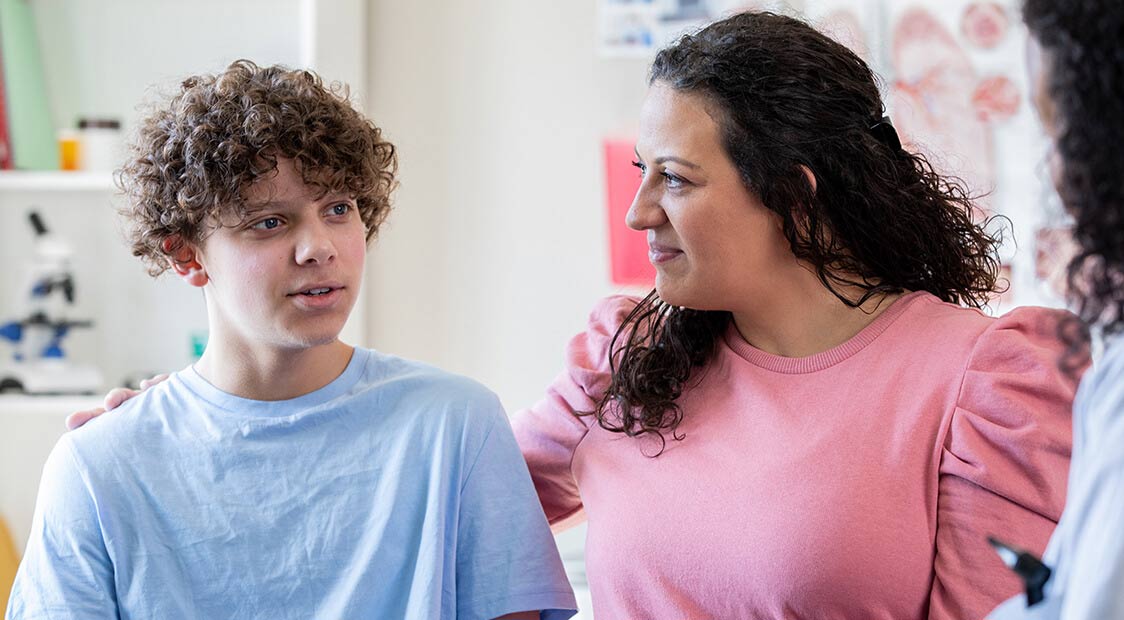Radiation therapy and my cancer treatment plan
By Bradlee Robbert
Share:

Receiving a cancer diagnosis can be daunting and unsettling. It thrusts patients into a world filled with unfamiliar medical terminology and a multitude of treatment options. Some patients may find themselves needing to grasp the complexities of radiation therapy alone, while others face the intricate web of surgery, radiation therapy, chemotherapy and immunotherapy. Regardless of the path their treatment takes, patients often feel like they're embarking on a steep journey of comprehension.
Considering that radiation therapy is a crucial component in treating at least 50% of all cancer cases, it is important for patients to seek clarity by asking essential questions and finding meaningful answers when they discover radiation is a necessary part of their cancer treatment plan.
The first step is finding a radiation oncologist. A radiation oncologist is a medical doctor who specializes in utilizing radiation to treat cancer and other noncancerous conditions. Often, patients will be referred to a radiation oncologist by their surgeon, medical oncologist or primary care physician. However, patients can use the internet to find radiation oncologists within or outside of their community.
Tips When Evaluating a Radiation Oncologist and Radiation Oncology Practice
Tip 1: Prepare
Before your appointment with the radiation oncologist, it's crucial to be well-prepared. This preparation involves conducting thorough research, utilizing online resources and leveraging rating systems like Google ratings or Healthgrades to gain insights into the experiences of other patients who have been under the care of the oncologist. Additionally, it is valuable to investigate the specific disease sites the radiation oncologist specializes in treating.
Radiation oncologists may have varying degrees of specialization, with some focusing on specific subspecialties while others maintain a more general practice. Understanding their subspecialization is significant, as it can directly affect their familiarity with the latest treatment methods and advancements tailored to particular diagnoses.
Tip 2: Meeting the Radiation Oncologist
Much like our first tip, it is essential for patients to arrive prepared with a list of questions when meeting with the radiation oncologist. The oncologist should strive to comprehensively answer all your inquiries, recognizing that your care is of utmost importance. Establishing a strong rapport between you and your physician holds tremendous significance in this process.
Should you find the physician rushed or unable to dedicate sufficient time to address your concerns and needs, it may be a good idea to consider seeking a second opinion to ensure that you receive the highest standard of care.
Tip 3: The Team
During your initial consultation with the radiation oncologist, it is crucial to gain insights into the entire team responsible for your cancer care. While the oncologist plays a pivotal role in directing your treatment, it is equally important to acquaint yourself with the dedicated professionals who will be actively involved in delivering your care. This includes nurses, therapists, dosimetrists and physicists, each of whom contribute his or her expertise to ensure the success of your treatment plan.
Tip 4: The Technology
Radiation therapy typically takes one of two primary forms: internal or external. Brachytherapy, a form of internal radiation therapy, employs radioactive sources to target and treat specific types of cancers directly. In contrast, external beam radiation therapy utilizes advanced equipment to precisely deliver radiation from outside the body. It is important to note that, unlike brachytherapy, external beam radiation therapy only emits radiation when the treatment machine is actively engaged.
The array of treatment technologies available to radiation oncologists can vary. While some oncologists may have access to only a single type of treatment technology, others may offer more options. It is crucial for patients to inquire about these technologies and understand their distinctions.
For instance, external beam radiation therapy using photons may be suitable for certain cancer cases, whereas proton beam therapy can provide the advantage of minimizing radiation exposure to healthy tissues due to its unique ability to halt radiation within the body (as explained in more detail here). Patients should actively explore these options and their potential benefits in consultation with their radiation oncologist.
Be prepared to learn new external beam radiation terms, such as:
- IMRT (intensity-modulated radiation therapy)
- VMAT (volumetric modulated arch therapy)
- Proton therapy (specialized external beam radiation using particles that stop in the body)
- PBS (pencil beam scanning, intensity-modulated proton beam therapy)
- Simulation (specific procedure before a course of radiation is prescribed)
Tip 5: The Process
Radiation therapy typically involves daily treatments, administered from Monday through Friday, spanning a duration of six to eight weeks. During each session, patients can expect to spend approximately an hour at the treatment facility. For the most part, individuals receiving external beam radiation therapy can continue with their regular daily activities throughout the treatment period without significant disruption.
However, it is important to note that those undergoing brachytherapy may require hospitalization or isolation from others for a specific period.
In some instances, radiation oncologists may explore more condensed treatment approaches to reduce the overall treatment duration. This strategy, known as hypofractionation, involves administering higher daily radiation doses over a shorter period. In more accelerated cases, referred to as ultra-hypofractionated radiotherapy, even higher radiation doses are delivered within a few days. To determine if you are a suitable candidate for these advanced treatment options, consult with your radiation oncologist.
Tip 6: Radiation Safety
Discuss with your radiation oncologist how they maintain the highest level of radiation safety procedures within the facility. This includes patient-specific radiation treatment devices, equipment maintenance and a quality assurance program.
Patient-Specific Radiation Treatment Devices:
During external beam radiation therapy, patients undergo a personalized approach where customized treatment devices are meticulously designed. These devices play a pivotal role in enhancing the precision of treatment delivery while minimizing radiation exposure to healthy tissues. It is crucial for patients to grasp that not all oncology practices employ identical immobilization techniques.
Equipment Maintenance:
Radiation therapy equipment is complex, requiring rigorous quality tests daily, weekly, monthly and yearly. While your doctor may not personally calibrate this equipment, they should possess a comprehensive understanding of the essential safety checks that are routinely conducted to ensure the equipment's reliability and accuracy.
Quality Assurance Program:
Regrettably, medical errors remain a persistent issue within healthcare. Hence, it becomes imperative for radiation oncology practices to establish robust quality assurance programs. These high-caliber programs encompass various critical components, including peer reviews where fellow radiation oncologists assess their colleagues' work, mechanisms for reporting errors and ongoing processes for continuous quality improvement.
Patients are encouraged to proactively engage with their healthcare provider by inquiring about the measures in place to prevent mistakes and ensure the highest standard of care.
Tip 7: Resources
Radiation oncologists and their teams are committed to delivering exceptional patient care. However, while medical professionals are devoted to providing care, patients who have experienced the process possess invaluable insights into the actual journey. Ask your doctor for patient references or testimonials to gain a more comprehensive understanding.
In addition, inquire about support groups. Many practices host their own. If not, find one in the community. Some patients might need more assistance than others. Ask about social services that are provided through your treatment center.
This article scratches the surface of deciding on the best radiation therapy for your cancer treatment plan. There are many expert resources, including The American Cancer Society, which provides a comprehensive Guide to Radiation Therapy. Watch this video to find out more information about the radiation therapy process at the UF Health Proton Therapy Institute.
Contact us today to schedule your consultation and discuss your treatment options.


